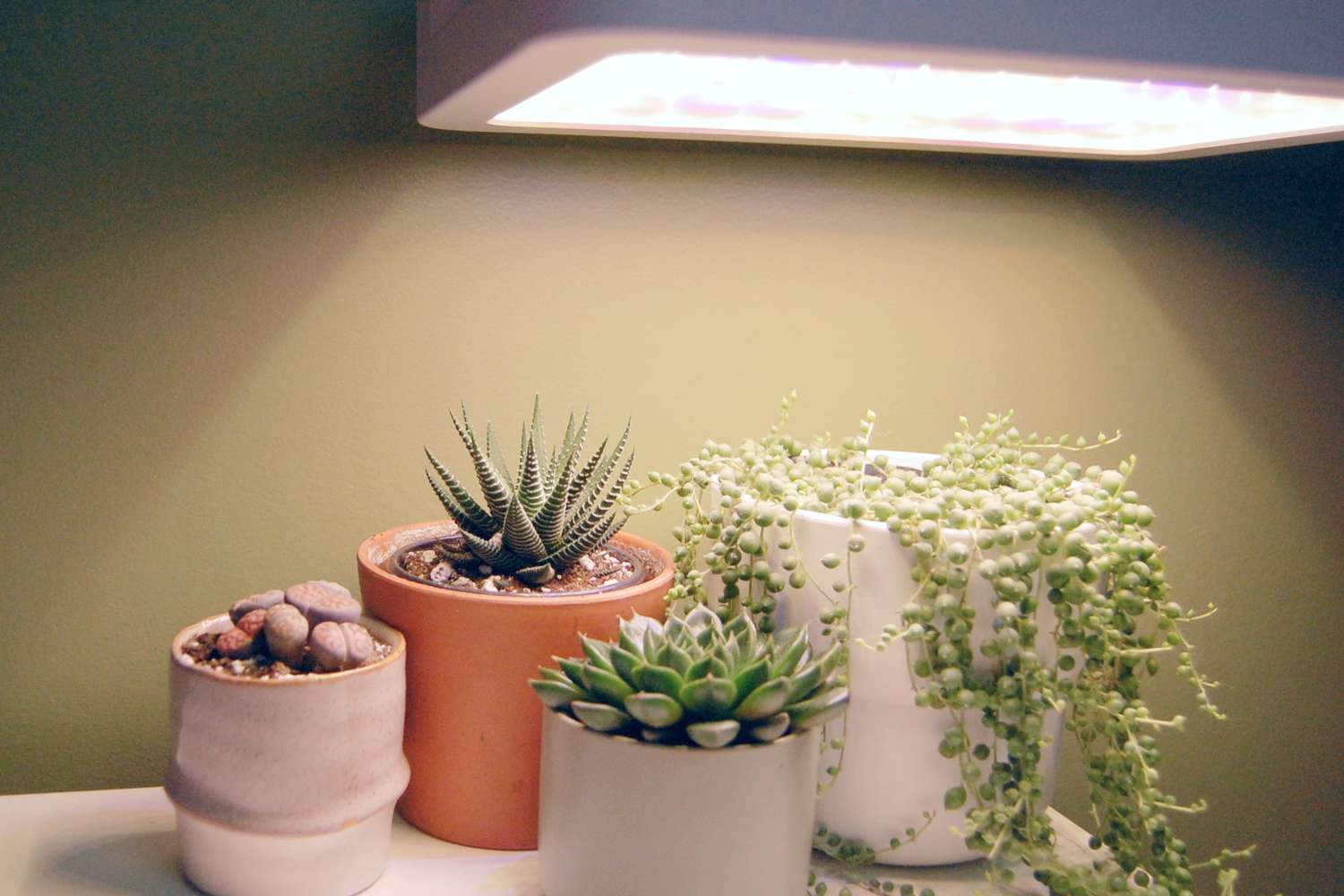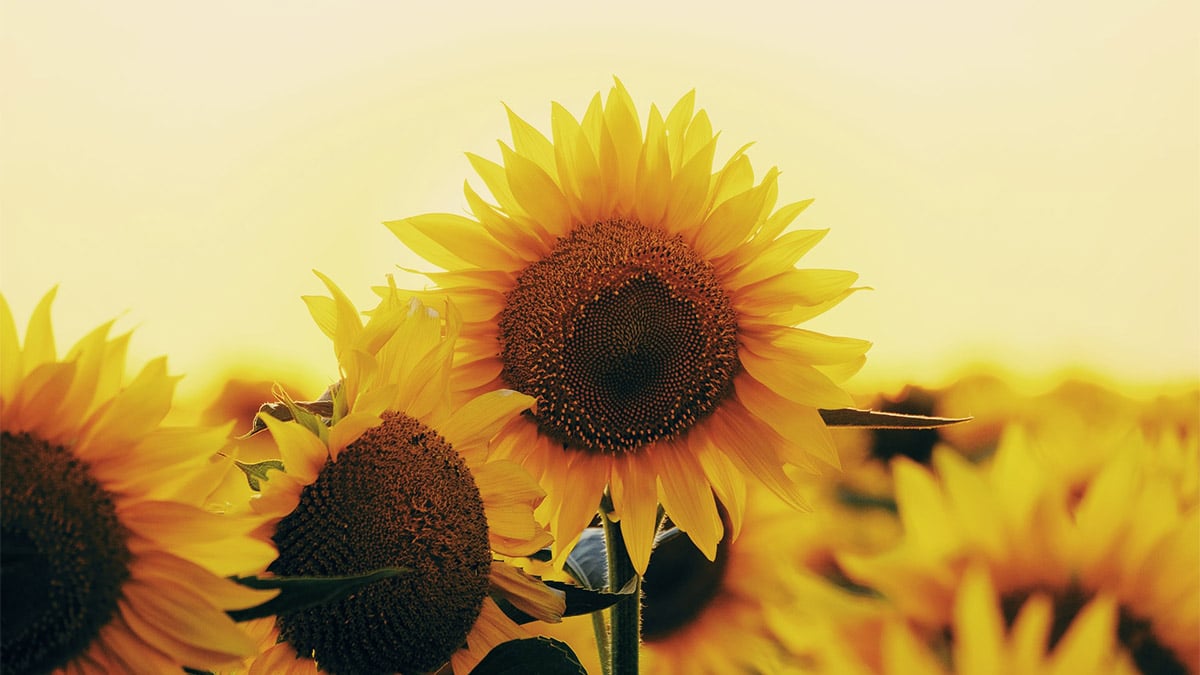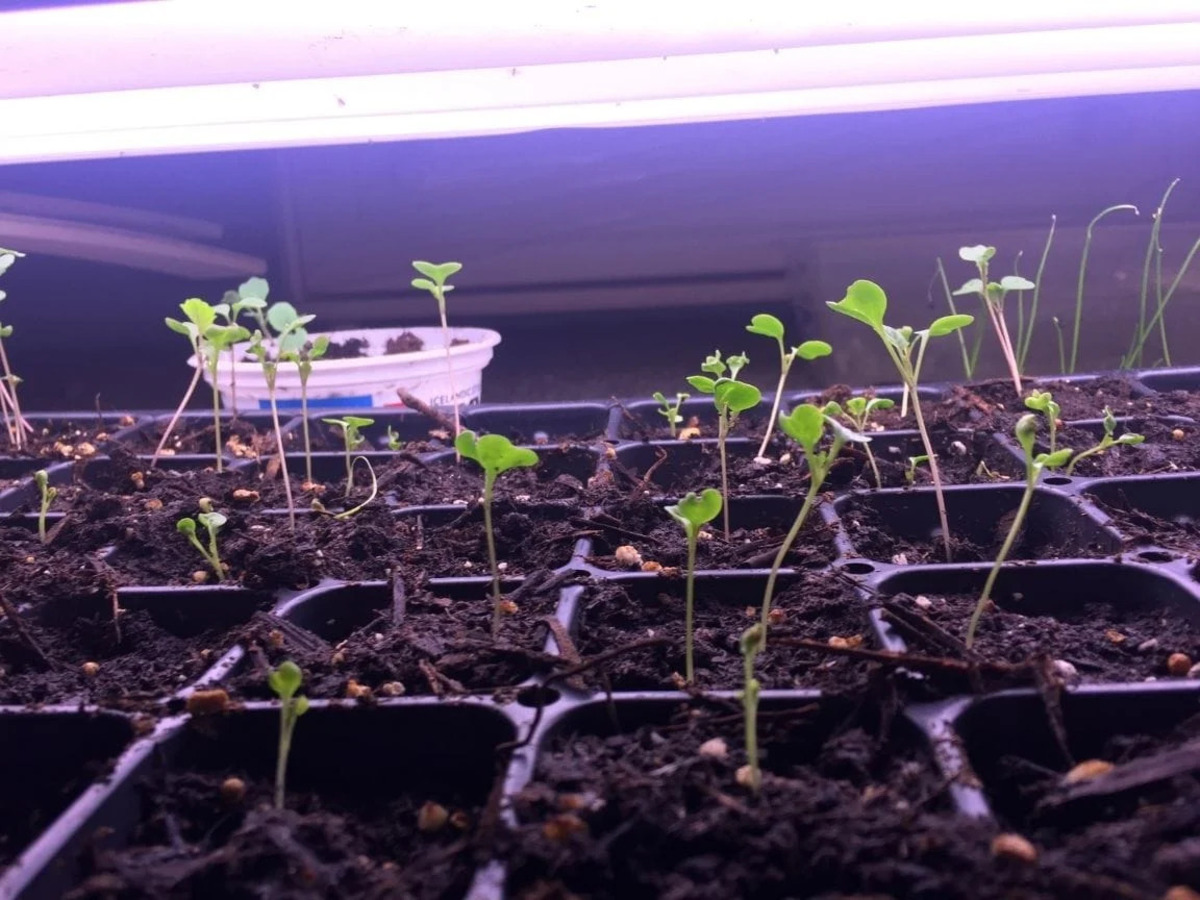Home>Types of Gardening>Ornamental Gardening>What Color Light Is Best For Weed Seedlings


Ornamental Gardening
What Color Light Is Best For Weed Seedlings
Published: December 31, 2023
Discover the best color light for nurturing healthy weed seedlings in your ornamental gardening projects. Find expert tips and advice to maximize growth and success.
(Many of the links in this article redirect to a specific reviewed product. Your purchase of these products through affiliate links helps to generate commission for Chicagolandgardening.com, at no extra cost. Learn more)
Table of Contents
Introduction
Welcome to the world of ornamental gardening! If you have a passion for plants, then you’re in the right place. Ornamental gardening is the art and science of growing plants for aesthetic purposes. Whether you have a small balcony garden or a sprawling backyard, the world of ornamental gardening offers endless possibilities to create a beautiful and inviting outdoor space.
In this article, we will explore the fascinating world of ornamental gardening, diving into the techniques, principles, and practices that will help you create stunning gardens that will be the envy of your neighbors. We will uncover the secrets of selecting and caring for ornamental plants, creating attractive designs, and maintaining a healthy and flourishing garden.
As an SEO expert with a deep knowledge of ornamental gardening, I am excited to share with you the best practices that will help you boost your garden’s visibility online. By optimizing your website and content for search engines, you can attract more visitors, increase engagement, and build a vibrant online presence for your gardening business.
Throughout this article, I will provide you with valuable insights and tips on how to optimize your ornamental gardening content for search engine optimization (SEO). I will cover everything from keyword research to on-page optimization and link building strategies that will elevate your website’s rankings in search engine results pages.
So, whether you are a beginner looking to dip your toes into the world of ornamental gardening or an experienced gardener seeking to take your online presence to new heights, this article is your ultimate guide to SEO for ornamental gardening. Let’s dive in and discover the secrets to growing your digital garden!
The Role of Light in Seedling Growth
Light plays a crucial role in the growth and development of seedlings. It acts as the primary source of energy for photosynthesis, a process that converts light into chemical energy, allowing plants to produce food and grow. Without adequate light, seedlings may become weak, leggy, and unable to reach their full potential.
Light also influences various aspects of seedling growth, including stem elongation, leaf expansion, and root development. Different wavelengths of light have different effects on these processes, leading to variations in plant morphology and overall health.
Furthermore, light influences photoperiodism, a physiological response in plants that regulates flowering, dormancy, and other developmental events. The duration and quality of light exposure can affect the timing and intensity of these processes in seedlings.
When it comes to the color spectrum, plants respond differently to different colors of light. They have specialized pigments called photoreceptors that absorb specific wavelengths and trigger specific physiological responses.
The two main types of photoreceptors are chlorophyll, which absorbs red and blue light for photosynthesis, and phytochromes, which respond to red and far-red light and regulate various developmental processes.
In the next section, we will delve deeper into the effects of different colors of light on seedling growth and explore how you can harness this knowledge to optimize the growth of your weed seedlings.
Understanding Different Colors of Light
When it comes to growing weed seedlings, understanding the effects of different colors of light is crucial. While all colors of light are essential for plant growth, certain wavelengths have unique influences on specific plant processes.
1. Blue Light: Blue light has a short wavelength and is crucial for promoting compact and sturdy growth in seedlings. It stimulates chlorophyll production, leading to increased photosynthesis and efficient energy conversion. Blue light is especially important during the early stages of seedling growth, as it helps prevent elongated and weak stems. It also enhances leaf development and overall plant vigor.
2. Red Light: Red light has a longer wavelength and is essential for flowering and fruiting. It promotes stem elongation and regulates the opening and closing of stomata, the tiny pores on plant leaves that allow for gas exchange. Red light is particularly crucial during the later stages of seedling growth when the focus shifts from vegetative growth to reproductive development.
3. Green Light: Surprisingly, green light has the least impact on seedling growth. Instead, it is largely reflected by plant tissues, making it less effective for photosynthesis. However, green light can still play a role in shaping plant architecture and influencing certain physiological responses.
4. Far-Red Light: Far-red light is an extension of the red light spectrum and is important for regulating seed germination, stem elongation, and light perception in plants. It is primarily detected by phytochromes, which initiate various developmental processes in response to the relative ratios of red and far-red light.
By understanding the effects of different colors of light on seedling growth, you can manipulate light conditions to optimize the health and development of your weed seedlings. In the next section, we will explore the factors to consider for successful seedling growth.
Factors to Consider for Seedling Growth
Successful seedling growth requires careful consideration of various factors to create an optimal environment for your weed plants. By understanding and addressing these factors, you can ensure healthy and vigorous seedling development. Here are some important factors to consider:
1. Light Intensity: The intensity of light directly affects plant growth. Seedlings require adequate light levels to sustain photosynthesis and promote healthy development. Ensure that your weed seedlings receive the right intensity of light for their growth stage, adjusting the distance between the light source and the plants as needed.
2. Light Duration: The duration of light exposure is also crucial. Weed seedlings typically require 12-18 hours of light per day during the vegetative growth stage. This mimics longer daylight hours and promotes vigorous growth. However, during the flowering stage, reducing the light duration to 10-12 hours can encourage the plants to transition to the reproductive phase.
3. Temperature: Seedlings have specific temperature requirements for optimal growth. Maintaining a consistent temperature between 65-75°F (18-24°C) promotes healthy root development and minimizes stress. Avoid extreme temperature fluctuations as they can affect seedling growth and overall plant health.
4. Humidity: Proper humidity levels are essential for weed seedlings. Higher humidity helps prevent excessive moisture loss through transpiration and promotes lush growth. Aim for a humidity level of around 60-70% during the seedling stage. However, be mindful of excessive humidity which can lead to fungal diseases.
5. Air Circulation: Good air circulation is important to prevent stagnant air and fungal diseases in seedlings. Use fans or ensure proper ventilation in your growing area to promote airflow and strengthen seedling stems.
6. Watering: Overwatering or underwatering can be detrimental to seedling growth. Provide your weed seedlings with the right amount of water, allowing the soil to dry slightly between watering sessions. Avoid waterlogging, as it can lead to root rot and other issues.
7. Nutrients: Seedlings require a balanced supply of nutrients for healthy growth. Start with a light application of a well-balanced fertilizer designed for seedlings. As they grow, gradually increase the nutrient concentration to support their increasing nutritional needs.
Consider these factors and adjust your growing conditions accordingly to ensure optimal seedling growth. In the next sections, we will explore the specific benefits of blue and red light for the growth of your weed seedlings.
The Benefits of Blue Light for Weed Seedlings
Blue light plays a crucial role in the growth and development of weed seedlings. Here are some of the key benefits of incorporating blue light into your indoor garden:
1. Promotes Compact and Sturdy Growth: Blue light is essential for promoting strong and compact growth in weed seedlings. It stimulates chlorophyll production, leading to increased photosynthesis and energy conversion. This results in stronger stems and overall sturdier plants.
2. Enhances Leaf Development: Blue light plays a vital role in leaf development. It helps in the formation of chloroplasts, the sites of photosynthesis, and promotes the accumulation of leaf pigments. Adequate blue light exposure leads to larger, greener, and healthier leaves.
3. Prevents Leggy Growth: Insufficient light or imbalanced light spectrum can cause seedlings to become elongated and leggy. Blue light helps regulate stem elongation by inhibiting the production of a plant hormone called gibberellin, which is responsible for cell elongation. By providing adequate blue light, you can prevent leggy growth and promote stronger, more compact seedlings.
4. Supports Important Developmental Processes: Blue light is crucial for regulating important developmental processes in weed seedlings. It influences the opening and closing of stomata, regulates plant orientation, and promotes root development. By providing the right amount of blue light, you can ensure healthy overall growth and development.
5. Improves Overall Plant Vigor: By optimizing the blue light spectrum, you can enhance the overall vigor and health of your weed seedlings. Strong, compact growth with healthy leaves and well-developed roots sets the foundation for successful and productive plants.
To harness the benefits of blue light, incorporate blue LED grow lights or fluorescent grow lights with a high blue light output into your indoor garden setup. Aim for a balanced light spectrum that includes both blue and red wavelengths to provide a complete spectrum for your weed seedlings.
In the next section, we will explore the advantages and considerations of using red light for the growth of weed seedlings.
The Pros and Cons of Red Light for Weed Seedlings
Red light is an important component in the growth of weed seedlings, but it also has its pros and cons. Here are the advantages and considerations of incorporating red light into your indoor gardening setup:
Pros of Red Light:
- Promotes Flowering and Fruit Production: Red light plays a critical role in triggering flowering and fruiting in weed plants. It stimulates the production of a plant pigment called phytochrome, which regulates the flowering process. By providing an adequate amount of red light during the flowering stage, you can encourage robust flower development and improve yield.
- Influences Stem Elongation: Red light has been found to promote stem elongation in plants. This can be beneficial during certain stages of growth where a taller plant structure is desired. However, it is important to maintain a balance between stem elongation and compact growth to prevent weak and leggy stems.
- Regulates Stomatal Opening and Closing: Red light is involved in the regulation of stomatal opening and closing, which helps in gas exchange and water regulation in plants. This is crucial for maintaining optimal plant health and preventing issues such as dehydration.
Considerations of Red Light:
- Possibility of Leggy Growth: Excessive red light, especially without sufficient blue light, can lead to leggy growth in weed seedlings. It is important to maintain a balanced light spectrum to promote sturdy and compact growth.
- Lower Leaf Production: While red light is important for flowering, it may not promote as much leaf production compared to blue light. It is crucial to provide a balanced light spectrum that includes both red and blue wavelengths to ensure proper leaf development and overall plant vigor.
- Influences Circadian Rhythms: Red light can impact the circadian rhythms of plants, affecting their physiological processes. This can be both advantageous and disadvantageous, depending on the specific growth stage and desired outcomes for your weed plants.
To effectively incorporate red light into your indoor garden, it is recommended to use LED grow lights or fluorescent grow lights with a high red light output. This allows you to maintain a balanced light spectrum that includes both blue and red wavelengths for optimal growth and development of your weed seedlings.
The selection of light spectrum should be based on the specific growth stage of your weed plants and the desired outcomes you are aiming for. By understanding the pros and cons of red light, you can make informed decisions to optimize the growth of your weed seedlings.
Choosing the Right Light for Your Weed Seedlings
When it comes to choosing the right light for your weed seedlings, it is important to consider their specific needs and growth stage. Here are some factors to consider when selecting the perfect light for your indoor garden:
1. Light Spectrum: As we have discussed earlier, a balanced light spectrum that includes both blue and red wavelengths is essential for the optimal growth of weed seedlings. Look for LED grow lights or fluorescent grow lights that offer a customizable spectrum or a combination of blue and red lights.
2. Intensity and Coverage: Ensure that the light fixture you choose provides adequate light intensity and covers the desired area of your indoor garden. The light should be evenly distributed and penetrate through the canopy to reach all parts of the plants.
3. Energy Efficiency: Consider the energy efficiency of the light fixture to minimize electricity costs. LED grow lights are known for their energy efficiency and long lifespan compared to traditional lighting options.
4. Adjustable Height: Look for lights that have an adjustable height feature, allowing you to maintain the optimal distance between the seedlings and the light source. This ensures that the plants receive the right amount of light without burning or causing heat stress.
5. Heat Output: Be mindful of the heat emitted by the light fixture. High-intensity lights can generate heat, which may require additional cooling measures like fans or heat sinks to maintain the ideal temperature for your seedlings.
6. Durability and Reliability: Choose lights that are durable and reliable, as they will be continuously used throughout the growth cycle of your weed plants. Look for reputable brands that offer warranties and good customer support.
7. Budget: Consider your budget when selecting a light fixture. While it is important to invest in quality lighting equipment, there are options available at different price points to suit your needs and budget.
Remember that the light requirements may vary depending on the specific strain of weed you are growing. It is recommended to research the light preferences of your specific strain and adjust your lighting setup accordingly.
By carefully considering these factors and selecting the right light for your weed seedlings, you will create an ideal environment for their growth and ensure optimal results in your indoor garden.
Conclusion
Congratulations! You have now gained a comprehensive understanding of the important role light plays in the growth and development of your weed seedlings. By harnessing the power of different colors of light, you can optimize the health, vigor, and productivity of your indoor garden.
We explored the benefits of blue light, which promotes sturdy growth, leaf development, and prevents leggy stems. We also discussed the advantages and considerations of red light, which stimulates flowering and fruiting but may require careful balancing with blue light to avoid leggy growth.
When choosing the right light for your weed seedlings, remember to consider the light spectrum, intensity, coverage, energy efficiency, adjustable height, heat output, durability, and your budget. By selecting the appropriate light fixture, you can create an optimal environment that meets the specific needs of your plants.
Additionally, don’t overlook other factors crucial to seedling growth, such as temperature, humidity, air circulation, watering, and nutrient balance. By addressing these factors, you provide a supportive environment that allows your seedlings to thrive.
Remember, as an SEO expert, it’s essential to optimize your online presence by incorporating keywords naturally into your content. By applying SEO strategies and delivering high-quality, engaging articles, you can enhance your website’s visibility, attract more visitors, and establish yourself as an authority in the world of ornamental gardening.
Now that you have the knowledge and tools to optimize your indoor garden’s lighting and enhance your digital presence, it’s time to put it into practice. Embrace the wonders of ornamental gardening, experiment with different light spectra, and watch your weed seedlings flourish and thrive like never before.
Happy gardening and may your ornamental garden be filled with beauty and joy!






